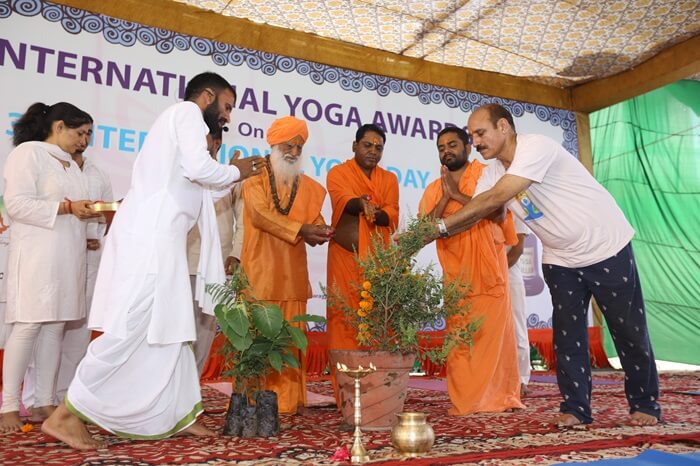This blog is written for beginners, especially those who are new to the art and science of Yoga. There are several different types of Yoga. Some styles are adapted from ancient or traditional Vedic scripts, while many modern forms are innovatively modified, blending traditional postures with contemporary techniques.
Given the overwhelming amount of information available online, it is crucial to understand the most common styles of Yoga. We’ve streamlined the information to provide you with a clear and original introduction to these Yoga styles.
Most Common Yoga Styles
Hatha Yoga
Hatha Yoga involves a union of the mind, body, and soul through disciplined practice. It is a classical form of Yoga that serves as the foundation for styles such as Ashtanga and Iyengar Yoga. Originating in the 2nd or 5th century BCE from the sage Patanjali, Hatha Yoga has gained popularity in the West as a fitness practice that enhances strength, balance, flexibility, body relaxation, and mental concentration. The goal of Hatha Yoga is to transcend body-consciousness. Mastery of the asanas is indicated by the ability to sit motionless with an erect spine for extended periods, thereby activating inner energies.
Ashtanga Yoga
Ashtanga Yoga, meaning “Eight-limbed yoga,” is outlined in the Patanjali Yoga Sutras. This system provides guidelines for better living and spiritual growth. The eight limbs are Yama, Niyama, Asana, Pranayama, Pratyahara, Dharana, Dhyana, and Samadhi. This form of Yoga helps generate energy flow and opens the chakras.
Vinyasa Yoga
Vinyasa Yoga is characterized by a smooth flow and includes various forms such as Ashtanga and Power Yoga. Unlike Hatha Yoga, Vinyasa Yoga arranges the progression of poses to be synchronized with the breath, which acts as an anchor during transitions between poses.
Iyengar Yoga
Named after B.K.S. Iyengar, this modernized form of Hatha Yoga emphasizes precise adaptation of poses with correct alignment and adjustments. Iyengar Yoga focuses on balancing the mind, body, and soul with meticulous attention to detail and perfection in practice.
Power Yoga
Power Yoga refers to a fitness-based approach to Vinyasa Yoga involving rigorous training. It incorporates the athleticism of Ashtanga Yoga, offering a challenging workout that enhances strength and flexibility. Often referred to as “gym yoga,” Power Yoga promotes physical endurance, confidence, and stress relief, making it a popular choice for weight loss and overall fitness.
Yin Yoga
Yin Yoga is a slow-paced practice where postures are held for longer durations, suitable for both beginners and advanced practitioners. Introduced by Paulie Zink, Yin Yoga emphasizes patience, acceptance, and growth, focusing on stretching the connective tissues and joints. This passive practice involves holding poses for 2-5 minutes with deep, intentional breathing.
These are some of the most common Yoga styles, though there are many others such as Kundalini Yoga, Hot Yoga, and Restorative Yoga. Consistent self-practice is key to attracting positive universal energy and maintaining balance in life.
Conclusion
Unlock your potential with advanced Yoga techniques by joining our 200-hour Yoga Teacher Training in India, 300-hour Yoga Teacher Training in India, or 500-hour Yoga Teacher Training in India. Build a peaceful mindset through the wisdom of Yoga and discover the beauty around you.
For a holistic experience, consider our Ayurveda Retreat in India or a Yoga Retreat in India. Embrace the transformative power of Yoga and elevate your practice today!















